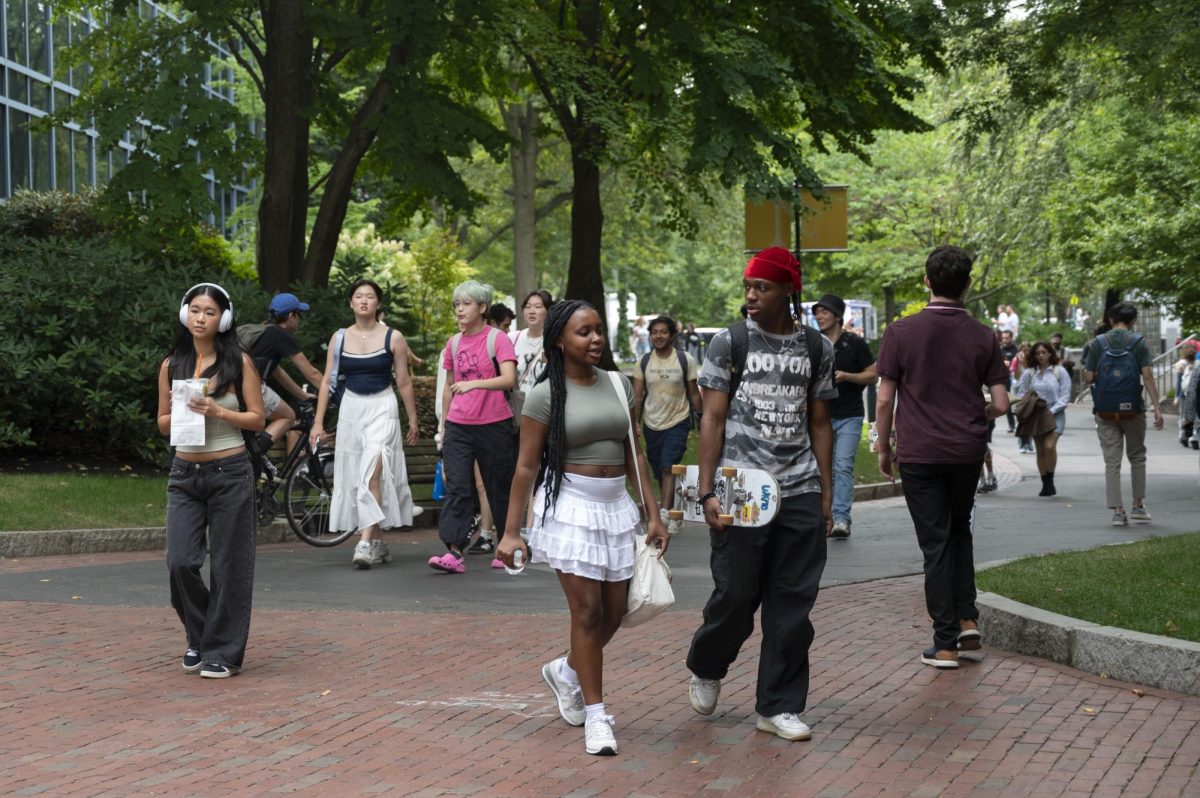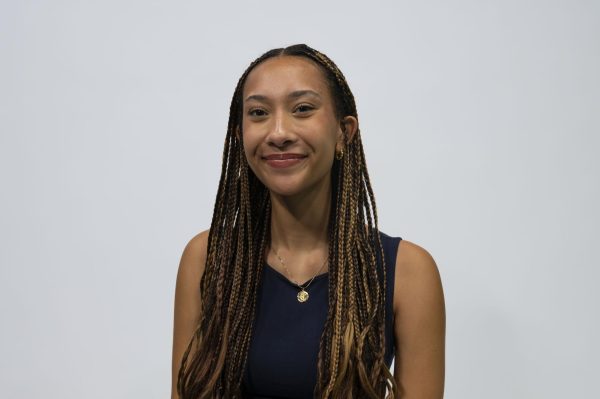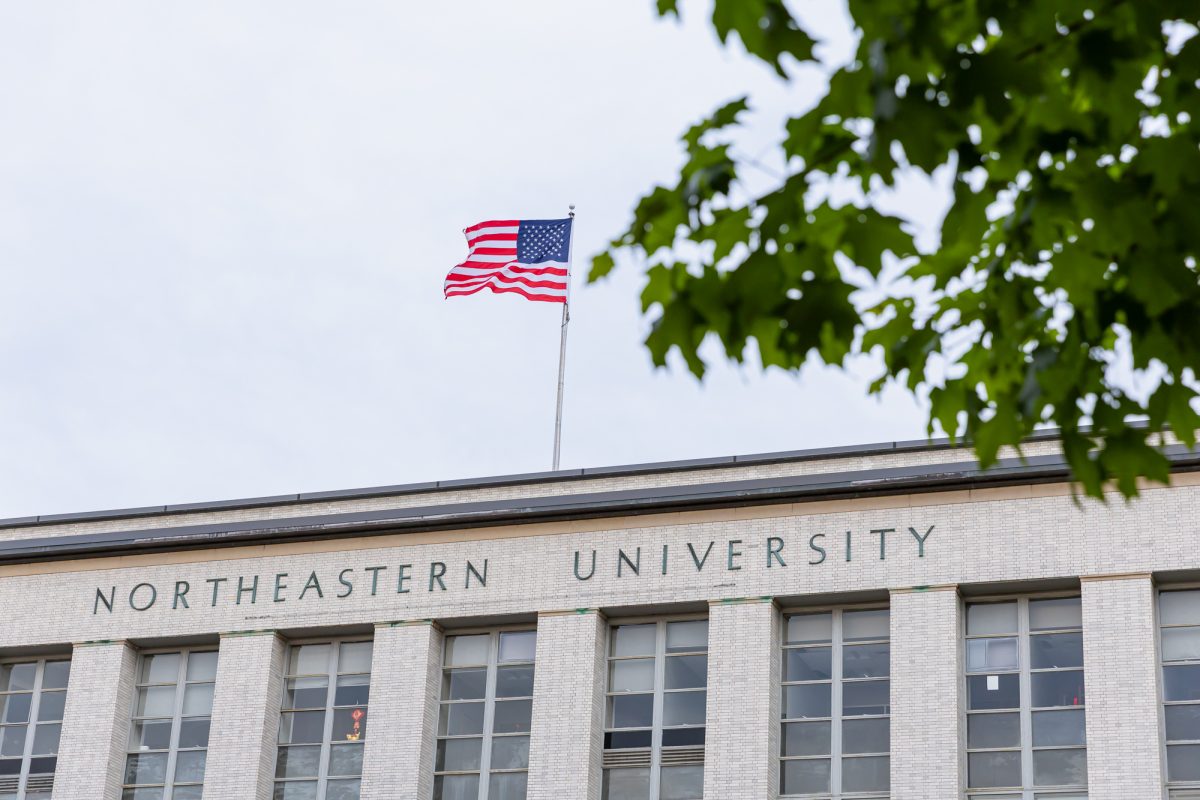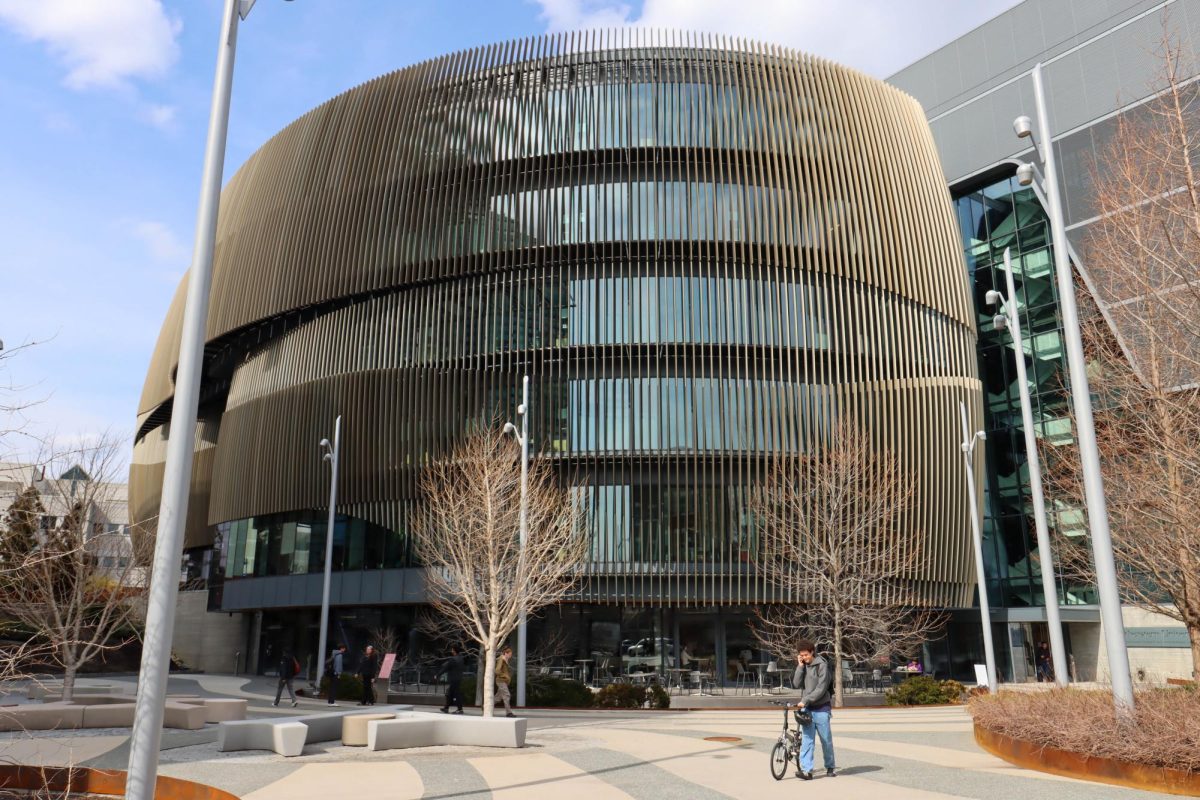Each year, Northeastern becomes more selective than the last; for the Class of 2028, its 5.2% acceptance rate to the Boston campus rivaled that of nearby Ivy League institutions Harvard University and Brown University.
The single-digit number — which also encompasses Early Decision and Early Action admits, according to the university — gives Northeastern an air of exclusivity and prestige, a metric that doesn’t go unnoticed by applicants and enrolled students. But some have doubts about whether 5.2% fairly reflects Northeastern’s selectivity and quality of education.
“The lowering acceptance rate is the result of more applicants, not their making the education more intensive,” said fourth-year behavioral neuroscience major Brooke Berube.
Northeastern received a record-breaking number of applications for the Class of 2028, exceeding 98,000 applicants. While thousands of first-year students were accepted through alternate admissions programs like N.U.in and Global Scholars, the 5.2% rate only includes those starting college on the Boston campus, the university told The News.
“I think they’re strategic about [the acceptance rate]. I think there’s a reason they do it that way. Obviously, one of the main goals of an educational institution is to recruit top talent,” said Sean Blundin, a second-year business administration and data science combined major. “[Acceptance rate] is kind of a big metric for attracting better students and better professors. Like, the people at the top of the top. And I think that serves the university well, but also discredits the university at the same time.”
Northeastern isn’t the only institution that has seen a dramatic decrease in its acceptances. Highly-ranked colleges across the country have been getting more selective, but not necessarily due to an increase in competitiveness. FairTest found that over 80% of U.S. four-year colleges and universities will not require applicants to submit their standardized test scores for the fall 2025 admissions cycle, a trend that many institutions have continued since the 2020 pandemic rendered students unable to take SATs or ACTs. The lack of mandatory test scores has caused a surge in college applicants, and, in turn, decreased acceptance rates, Forbes reported. Northeastern announced in May it would remain test-optional “for the foreseeable future.”
“For a lot of people I know, being test-optional was huge,” said Blundin. “It’s just like, might as well apply, right?”
A report by Common App found that first-year applications to institutions that allow students to apply through the platform, including Northeastern, rose 6% for the fall 2024 cycle compared to 2022-23. Through March 1, the report found that over 1.3 million first-year applicants had applied to 834 schools available on the platform. Unlike nearby universities including Boston University and the Massachusetts Institute of Technology, Northeastern requires no supplemental essays, attracting even more applicants.
“I also know a lot of people who applied here only because there was no supplemental, so I think it’s interesting because, of course, that means the acceptance rate doesn’t reflect the credibility of the institution,” Blundin said.
Some students also raise a brow at the university determining the statistic based solely on admission to the Boston campus. Although Northeastern maintains that this means of calculation is the norm throughout higher education, it touts its alternative entry programs as not just a unique selling point, but an unparalleled part of the school’s identity. Compared to Northeastern’s nearly 100,000 applicants, surrounding institutions, Boston University and MIT, received 78,750 and 28,232 first-year applications, respectively, but have no alternative entry programs akin to N.U.in or Global Scholars. Students argue that only factoring in the Boston campus — especially in light of the Oakland and London campuses granting four-year degrees — is not a representative method of assessment.
“I think a large part of Northeastern is its global essence,” said Mia Gatzke, a first-year chemistry major. “Northeastern is all of its campuses.”
While a low acceptance rate may seem attractive to those seeking out a prestigious school, most applicants to Northeastern don’t cite its exclusivity as a major draw. But the number still holds weight, students said.
“I wanted to view a school more holistically and consider what else it had to offer, but I’d be lying if I said that [the acceptance rate] didn’t factor into my decision at all,” said Auden Oakes, a first-year journalism and English combined major. Oakes said that he was told during the college applications process not to see selectivity as a statistic that defines a university.
Bea Wall, a first-year College of Engineering student in the Explore Program, also said a single-digit acceptance rate wasn’t her top priority.
“[But] in a sense, it kind of affirmed that I’d be going to a school that would be academically appealing,” she said.
Both Oakes and Wall applied to similarly or better nationally-ranked universities than Northeastern, like the University of Michigan, the University of Washington and the University of Texas at Austin. But in terms of acceptance, Northeastern was still the most selective school on their list, which some said attracts a certain kind of student.
“My high school experience allowed my transition here to be a lot more seamless. … If I’d been surrounded by people who didn’t push themselves academically as much, being surrounded by so many smart people would’ve felt a lot more abrasive,” Oakes said. “I feel at home academically.”
Meanwhile, some returning students say they feel that the 5.2% metric isn’t necessarily as much of an indicator of prestige as some would be led to believe. They share the sentiment that the number may be artificially inflated, pointing to the fact that the figure only includes students admitted to the Boston campus, leaving out Northeastern’s London and Oakland campuses as well as N.U.in affiliates that currently host students through first-year study abroad programs.
Isabella Robles, a second-year business administration and political science combined major, was admitted to Northeastern as a Global Scholar and spent her first year on the Oakland campus. Robles said that she thinks that it would be more transparent for the university to release the acceptance statistics for all of its campuses.
“They should report a different acceptance rate for each campus, especially if they want to make it into a four-year campus,” Robles said.
Though her time on the Boston campus has just begun, Robles said she has already noticed a difference in Boston’s resources as compared to Oakland’s.
“Considering that Northeastern is a global school … to neglect all the campuses that we praise so much is interesting,” said Emma Dahl, a fourth-year nursing major.
Students do generally share the sentiment that Northeastern is a quality institution. In making their final college admissions decisions, the co-op program was extremely attractive, they said, and a contained campus in the middle of a major city blended the more traditional college experience with reaping the benefits of living in Boston.
“I’m really happy here, and I do believe that Northeastern is a great university,” Dahl said. “But there are often times when I don’t necessarily feel prepared and there can be a lot of disorganization.”
The Huntington News is dedicated to serving the Northeastern University community with original, professional reporting and creating an environment in which student journalists can learn from one another. Support an independent, free press at Northeastern University with your donation today.












